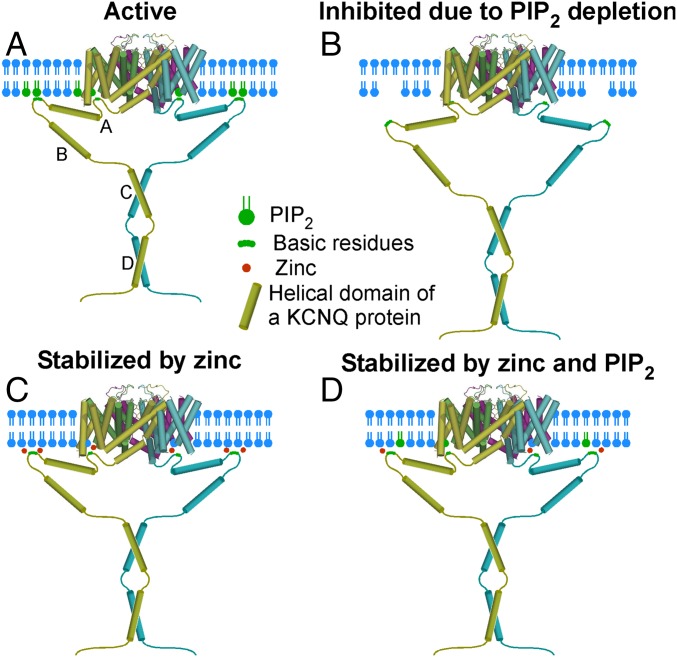Fig. 7.
Hypothesis for the stabilization of the KCNQ channel by PIP2 and intracellular zinc. (A) An active channel in the presence of a saturating PIP2 concentration. (B) A channel inhibited by PIP2 depletion (e.g., because of PLC or ciVSP activation). (C) A channel in the absence of membrane PIP2 but stabilized by zinc, e.g., via shielding the negatively charged residues and coordinating the channel–membrane interface to strengthen the interactions with other phospholipids. (D) A scenario of a subsaturating membrane PIP2 level when the channel activity is maximized by zinc because of the increased stability of the interaction with PIP2 and other membrane phospholipids.

